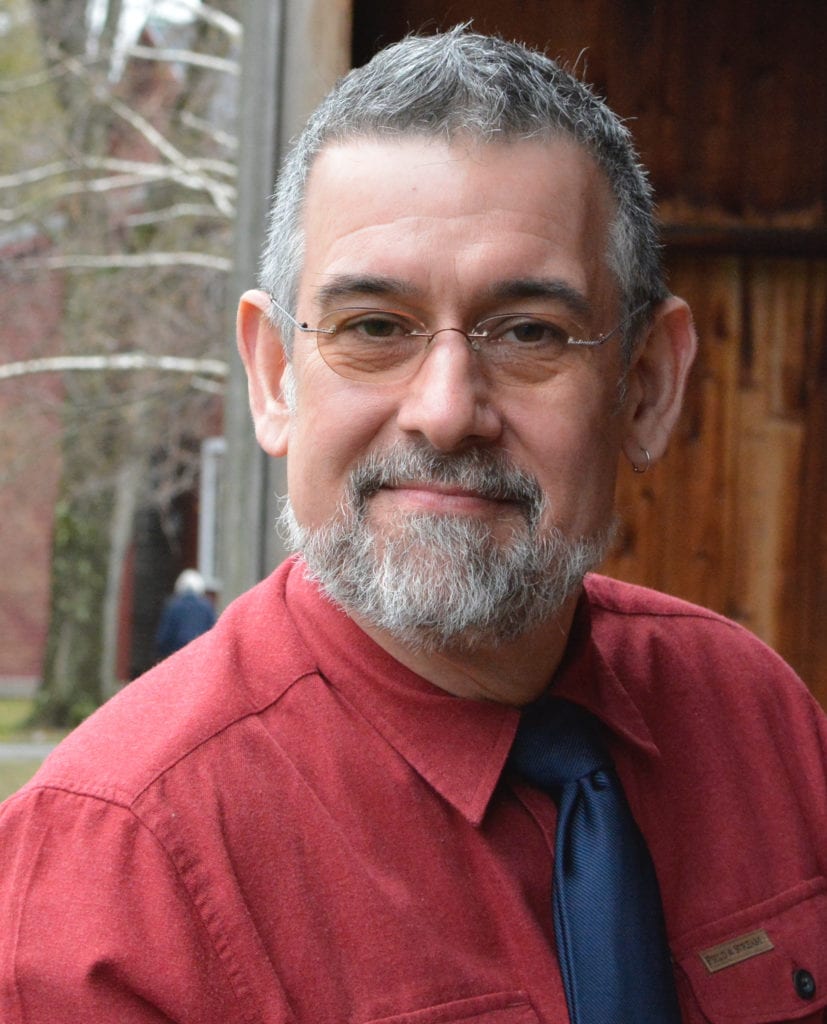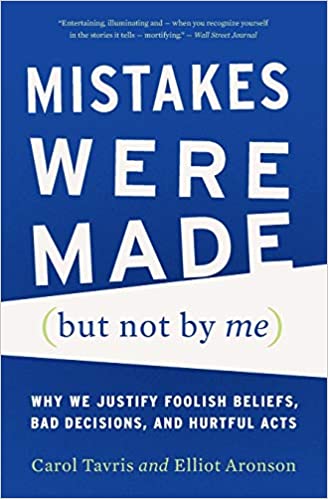As we wrap up our series on the learning business in disruptive times, it’s important to reflect on what we’ve learned and consider where we go next in these complex times of uncertainty.
You may remember back in episode 254, that we broke down and reflected on our first two interviews—one with Seth Kahan, founder of Visionary Leadership, and the other with Shilpa Alimchandani, a diversity, equity, and inclusion strategist.
Since then, we’ve had the chance to also speak with Tracey Steiner, senior vice president for education and training at the National Rural Electric Cooperative Association, and Shawn Boynes, executive director of the American Association for Anatomy.
In this final installment of our seven-part series, we delve into the highlights and key takeaways of those recent conversations. We also offer some final points of reflection to consider related to the possibilities and complexities of the learning business in disruptive times and the places where you might need to “begin again”.
To tune in, just click below. To make sure you catch all of the future episodes, be sure to subscribe by RSS, Apple Podcasts, Spotify, Stitcher Radio, iHeartRadio, PodBean, or any podcatcher service you may use (e.g., Overcast). And, if you like the podcast, be sure to give it a tweet!
Listen to the Show
Access the Transcript
(NEW!) Download a PDF transcript of this episode’s audio.
Read the Show Notes
[00:18] – An overview of the first six episodes in our series on the learning business in disruptive times:
256. Risking Innovation in Disruptive Times with Shawn Boynes of AAA
255. Cooperative Learning and Leading with Tracey Steiner
254. Possibilities and Complexities
253. Diversity and Disruption with Shilpa Alimchandani
252. Leading in Disruptive Times with Seth Kahan
251. Times of Disruption
Categories of Disruption
[02:06] – We had four categories of disruption in mind as we framed this series:
- The pandemic
- Systemic racism
- The economic situation
- Political contentiousness and uncertainty in a major election year
And all of our categories came up overtly in Jeff’s conversation with Tracey.
In addition, they talked about the fact that her industry was already experiencing disruption—disruption that had nothing to do with the four categories we had in mind.
The electric coops were already experiencing pretty profound disruption—the proliferation of renewable energy resources, like sun and wind, for example.
And we think that’s a good reminder that some of these newer or more timely disruptors—like the COVID-19 pandemic or the political contentiousness of a major election—may be layered on top of other disruptors.
So be aware of what your market is experiencing already and in addition to the types of disruption we’ve named because the disruptions all interact and co-mingle and contribute to the complexities of living and working.
And those are the complexities that learning businesses need to understand so they can really serve their learners.
Like Seth, Tracey raised the issue of climate change as another category of disruption.
We didn’t explicitly name it, but we definitely see climate change having profound impact on how the world lives and works.
And Tracey noted that climate change can be a polarizing topic among those NRECA serves.
NRECA serves people with a wide variety of views of and opinions on climate change and what needs to be done, or not. And climate change is one of those topics that tends to get politicized, and so there are politics mixing in with discussions about climate.
In Celisa’s conversation with Shawn, the pandemic, its economic impact, and racism came up overtly, and, while politics weren’t an explicit topic, any talk of systemic racism implies politics, has a political shading, as the political infrastructure is one of the big systems involved in establishing and perpetuating racism.
Shawn and Tracey also point to learning businesses and other organizations, employers in general, as another big player in systemic racism—and both see the potential for those organizations to support or thwart racism.
Tracey made an interesting point about co-ops having a kind of built-in belief that they exist to serve all, even communities that have historically been underserved.
In the case of NRECA, for example, for-profit companies didn’t want to electrify rural America because it was simply too expensive, and that’s where electric co-ops come in and fill the gap because, regardless of the profit margin, they’re committed to providing electricity for all.
And we think her point, while extra true of cooperatives, is generally true for associations.
So many associations have at their core a commitment to serve a particular group—a profession, a trade, an industry—and they’re committed to serving that entire group, not a subset. And so there’s a kind of philosophical approach underpinning most associations that make it a natural fit to support equity and inclusion, and there’s a natural diversity among their stakeholders and those they serve.
Shawn sees George Floyd’s killing as an inflection point—that is, despite what we were saying about a pursuit of equity being a natural fit for many learning businesses, like associations—many still managed to keep the issue of systemic racism at arms’ length.
If their mission or focus wasn’t tightly on equity or racism, they side-stepped; they dodged.
But George Floyd converged with the pandemic, and so a lot more people had the time and the space to look at racism more closely this year.
And there was demand from employees and society in general for organizations to do more than issue statements about DEI, to look at the make-up of their leadership and staff, to make changes, to not stop at fine-sounding words but to also take anti-racist action.
Talking the talking is fine and good, but also walk the walk. Do the hard but necessary work that makes positive change possible.
Revisiting the Reflection Questions
[07:01] – At the end of the first episode in this series, we offered four questions to you, to get you engaged and thinking about your learning business. Those questions were:
- What are the types of disruption you and the learners you serve are experiencing now?
- How are you responding personally and in your learning business to those types of disruption?
- How can you assess the effectiveness of your response?
- What else do you need to do to respond?
We revisited those questions in episode 254 in this series. At the end of that episode, we each shared some of what we’re reading, and then offered two more reflection questions—fresh kindling for the fire—based on the reading we shared.

Inspired by Eddie S. Glaude Jr.’s book Begin Again: James Baldwin’s America and Its Urgent Lessons for Our Own, we asked, “Where in your learning business do you need to begin again?”
And inspired by Rebecca Solnit’s essay “Naïve Cynicism,”we asked, “How can you counter naïve cynicism in yourself and your learners—that is, how can you be open to possibilities and interested in complexities?”
Our hope is that you spent a little time thinking about those questions and how you might at least begin to respond.
And perhaps, as you listened to what Tracey and Shawn had to say, you heard new facets or nuances that added to your understanding of these disruptive times and the implications for your learning business, the possibilities and the complexities and the places where you might need to begin again.
We always try to model behavior we want to see, so we want to revisit the questions inspired by Solnit, Baldwin and Glaude, and we’ll start with, “Where in your learning business do you need to begin again?”
Question 1: Where in Your Learning Business Do You Need to Begin Again?
[09:00] – As a reminder, that question was inspired by a passage from Baldwin that goes like this:
Not everything is lost. Responsibility cannot be lost; it can only be abdicated. If one refuses abdication, one begins again.
For us, that question gets at the idea that the important work, which would include the kind of large-scale change many learning businesses are after—the big-picture, needle-moving work of improving a trade, profession, or industry and those serving in and served by that trade, profession, or industry—the important work likely won’t be easy, but it also shouldn’t be abandoned.
The responsibility shouldn’t be abdicated.
Instead, we should begin again, over and over, as many times as necessary, looking at how to do right.
From Jeff’s conversation with Tracey, we heard her talk about the greater emphasis NRECA is putting on online learning as an example of beginning again.
She estimated that online learning was maybe 15 percent of their portfolio of offerings pre-pandemic, versus 85 percent in person.
So that’s been a huge shift for them, to ramp up that 15 percent to essentially 100 percent, for at least a time.
And she doesn’t see that snapping back to how it was.
The growth of online learning is a beginning again that’s likely to stick with NRECA after this pandemic is over.
The larger set of online offerings allows them to serve their very small member companies who can’t justify the cost or time of place-based training, but it also allows them to better serve even those who can attend place-based options because while they might have the budget and staff to allow for that some of the time, sometimes, online will simply be more convenient.
So Tracey and NRECA seem committed to offering more choice in the future.
That’s interesting because we have a hunch that a lasting impact of the pandemic will be a more judicious choice of the delivery medium.
We’d say there was a heavy emphasis on place-based pre-pandemic. During the pandemic we’re seeing almost exclusively online offerings.
So once we’re back to having the option of doing in person or online, we think—and hope—that organizations will think more about which medium fits best with the goals and objectives of a particular offering.
And we suspect that we might see more blended learning, at least for longer programs—so learners do some work online and meet in person for other components.
[11:55] – When reflecting on “Where in your learning business do you need to begin again?” from Celisa’s conversation with Shawn, what comes to mind are his comments about working from home, and the lasting impact of that and the potential for WFH to produce benefits—not only from workers who don’t have to deal with the stress of long, hairy commutes, but also for the organizations hiring them.
Suddenly the talent pool is much bigger if you don’t have to hire in the DC metro area, for example.
Shawn mentioned to letting go the Big Brother to need to know exactly where employees are and what they’re doing, and we think that’s kind of a sister idea to competency-based education—it’s less about how you do the work, more about whether you can do the work well.
There’s also the potential for those a learning business serves to grow when there’s less emphasis on place.
Near the end of our conversation with Shawn, he talked about the current moment providing an opportunity for organizations to reposition and to maybe serve a different audience.
And we think he’s right—now is a fantastic time to really look at your market, to get really clear on who you serve, why you serve them and not others, and how you serve them.
Related to that, a begin-again idea that came up in both our conversations with Tracey and Shawn is to really look at meetings and conferences, which are often big money-makers, and figuring out the revenue model and the sponsor relationships when you’re not dealing with the business-as-usual, show-up-in-one-place events.
Tracey mentioned that they’re trying to rethink sponsorship in the current environment, and that packaging and bundling benefits are part of what they’re looking at as they aim for that triple win—good for sponsors, good for members, and good for NRECA.
And hopefully it’ll result in deeper and more strategic partnership with key sponsors, which would be a win in any environment.
Question 2: How Can You Counter Naïve Cynicism in Yourself and Your Learners—That Is, How Can You Be Open to Possibilities and Interested in Complexities?
[14:20] – This second question was inspired by Rebecca Solnit who coined the term “naïve cynicism” and sees it as this world-weary assumption that things are as they are and that it’s futile to try to change them. And that naïve cynicism leads to a tendency to oversimplify, to push things into cut-and-dry categories, sacrificing nuance and ambivalence for the sake of certainty and clarity—even when certainty and clarity are impossible.
And, while Solnit wasn’t writing about our current disruptive times, because her essay was published a few years ago, naïve cynicism seems a real danger of the present moment.
Without the possibility of nuance and ambivalence, a polarized electorate seems almost a given.
We have a right and a left in the United States that don’t seem to have the ability to hold meaningful conversations and reach compromise.
Tracey mentioned NRECA really trying to create and cultivate an expectation among its audience that the organization is where they can go and agree to disagree and have constructive, productive conversations about tough issues.
She sees a lot of value to be unleashed in the organization being that kind of convener. And we think that is a way to counter naïve cynicism.
Rather than sweep politics under the rug and try to ignore it, embrace the differences, be open to the possibilities, and be interested in the complexities.
We found the discussion with Tracey about facilitation to be really helpful in a practical way.
Having constructive, productive conversations about tough issues isn’t easy, and you usually won’t get good results if you leave it to chance. You need to scaffold the discussions and have facilitators involved who truly know how to not take a position while helping participants state their positions clearly so others can then, respectfully, question and challenge. So there’s an opportunity for learning businesses that want to take on tough issues to invest in the skill set of facilitators and instructors, to make sure they’re prepared and able to help productive conversation and exchange take place.
And difficult but productive conversations are really at the heart of Shawn’s Texts to Table podcast that he co-hosts, which is focused on the difficult conversation of race—or probably the difficult conversations, plural, about race, because race is such a complex issue with a long history in the United States.
Shawn talked about that podcast being a risk for him—he’s a proponent of taking risks, so the podcast is him walking the walk.
He said he’s tended to compartmentalize personal from professional, but the podcast breaks down those walls—and personal and professional might be some of those cut-and-dry categories that don’t really exist anyway.
But he was willing to take the risk, to embrace the chance to de-compartmentalize, to make public some of the conversations he was having already with Black peers, other Black leaders, about race issues.
We think there’s at least a two-fold lesson in that: (1) take risks, and (2) don’t worry about mixing personal and professional when it makes sense to.
We have “one wild and precious life” to live, to quote poet Mary Oliver.
Highlights and Insights
[18:17] – Since this is the final episode of the series, we’d like to do a kind of round-up of the interviews and offer a highlight or insight from each of the four conversations that were part of this series:
Seth Kahan
For us, the 100 CEOs initiative was a standout from that conversation, for at least two reasons.
First, it’s an excellent example of how to be proactive, even in a situation where you feel like you have very little control.
His business had dropped to zero overnight, and he could have sat it out and waited for business to pick back up, but he decided to use the moment to learn. He decided to have 100 conversations with CEOs to see what they were dealing with in the moment, what they were struggling with, where they were having successes.
And that initiative strikes us as being a concrete way to be open to possibilities and interested in complexities.
The multiplicity of conversations, the different voices and viewpoints, those certainly must have given Seth some new insight into the possibilities and complexities.
And those weren’t sales conversations. They were chances for him to learn. And so ties to the other thing that really struck me about that 100 CEOs initiative.
It’s seems like an imminently stealable idea. In fact, Seth got the idea from someone else, in a different situation, a different industry.
But, as we talked about in episode 254, a learning business could easily set out to have 100 conversations with learners and learn a lot about their audience’s needs and wants along the way.
 Shilpa Alimchandani
Shilpa Alimchandani
[20:09] – One word from our conversation stands out: grace.
She was talking about how the pandemic has really forced full recognition of the fact that people are juggling and trying to balance many, many different responsibilities simultaneously.
She talked about how she was on a call with a client, the CEO of a company, and her child walked in and interrupted. And it was fine.
Things that might have felt unprofessional before now just feel like how life is. And people, in general, seem to be more forgiving, more gracious about minor disruptions. Because we’re dealing with major disruptions—the pandemic, the economy, racism, the elections—so the other disruptions—the child walking in, the dog barking—really do seem minor.
We think there’s an interesting possibility in this grace—it could contribute to an environment where more learning and engagement can happen.
There are three conditions that have to be met if learner engagement is to happen: meaning, availability, and safety.
And this grace contributes directly to safety, the sense learners have of being able to participate as their true selves without fearing damage to self-image, status, or career.
See our related episode, 3 Conditions of Learner Engagement.
 Tracey Steiner
Tracey Steiner
[21:38] – From our conversation with Tracey, we’ll highlight a question she asked: “What is our next normal that we want to create?”
This is a question that puts us in proactive mode—it encourages us to consciously respond to what’s happening and choose how to respond.
In disruptive times like these so much can feel out of our control, but Tracey really emphasized the need to stop focusing on what we have lost or what we can’t control and start focusing on the good that’s coming out of this.
And we don’t think that’s a glib, Pollyanna view—it’s about doing the work to clearly see what’s happening and to figure out what’s good and working, so we can continue that, deepen that, even when some of these disruptions die down in the future.
It’s about not only be shaped by what’s happening but also shaping what’s happening.
 Shawn Boynes
Shawn Boynes
[22:48] – From our conversation with Shawn, we’ll hit on the idea of risk again.
We’ve already touched on Shawn being a proponent of risk, but we think he’s really on to something when he highlights now as being a good time to take risk.
In times of disruption, there’s often a forgiveness, a kind of grace—to go back to Shilpa’s word—and so it can be, well, less risky to take risk at this moment.
And Shawn also talked about leaning in when he was talking about risk.
We think that’s an important addition to this idea of taking risk.
Leaning in is about building on momentum, carrying through on a potential that’s out there. It’s not about being rigid and insisting on in-person learning in the pandemic. It’s more about leaning into the possibilities—and complexities—of online learning in the pandemic.
So you’re taking something that the disruptive times suggest, and you’re leaning into it, and taking some associated risks at a time when you’re less likely to encounter pushback.
Disruptive Innovation
[24:05] – Innovating came up in our conversation with Shawn—innovation being the goal of risk. That is, hopefully something good and useful, like innovation, comes of the risk.
And when we put innovation together with disruptive times, we can’t help but think of disruptive innovation, even if that’s not what the term really means.
So let’s talk about what disruptive innovation does mean.
It’s a type of disruption, distinct from sustaining innovation.
Sustaining innovation improves a product or service without significantly affecting existing markets and players in those markets.
Disruptive innovation, in contrast, creates a new market by providing a different set of values that overtakes an existing market.
For example, the first automobiles weren’t a disruptive innovation because they were expensive luxury items, and most people kept using their horse-drawn carriages.
The affordable Ford Model T, however, was a disruptive innovation—because it was cheap enough that it overtook the horse-drawn vehicles—the Model T disrupted the existing horse-powered transport market.
We’re definitely seeing sustaining innovation happening during these disruptive times—the tweaks folks are making to improving contactless systems across a range of markets, from restaurant takeout and grocery shopping to hotels and other accommodations, to pivots to virtual conferences and creative ideas for gathering safely during a pandemic.
For instance, an electric co-op in Wisconsin held a drive-in meeting in April so they could stay in conformance with their bylaws that required an annual meeting, but, by keeping everyone in their cars or trucks, they could do it safely.
Voting was done by horn honks—short and quick for “aye” and long and loud for “nay.”
Those are all types of sustaining innovation, incremental changes or improvements, but the question remains what disruptive innovation will come out of these times? And we don’t think we know the answer yet.
But we think it’s worth noting that, typically, disruptive innovations come from outsiders and/or start-ups rather than existing, especially market-leading companies, just because outsiders and start-ups tend to have less invested in maintaining the status quo and are often nimbler than established players.
So, not to sound the alarm, but we think these disruptive times may well lead to some disruptive innovation that could threaten existing learning businesses.
Think if you were to build a learning business from the ground up now in the midst of a pandemic, you’d probably do it very differently than most learning businesses were built—you might have a much different cost and overhead structure if you were 100% digital, and be better positioned in your products and services to fit a world where gathering in person is tricky and dangerous.
Where Current Disruptions Stand
[27:29] – These are indeed dangerous and tricky times. As we’re recording, we’re seeing a new surge in COVID cases.
When we recorded the first episode of this series (on October 5, 2020) there were more than 35 million confirmed cases of coronavirus worldwide and almost 7.5 million in the U.S.; at the time of this recording (November 17, 2020) there are more than 55 million confirmed cases worldwide and over 11 million cases in the U.S, according to the Johns Hopkins Coronavirus Resource Center.
That’s tremendous growth in six weeks.
And the political contentiousness is still brewing.
Even as Biden as been declared president-elect and recognized by many countries around the world, Trump has not conceded at the time we’re recording.
And the economic situation remains difficult for many—many business and families are faltering amid new shutdowns and restrictions caused by the coronavirus spike and as the political contentiousness makes it hard to get financial aid passed by Congress.
And racial justice is still a stark need.
In short, it seems there’s a lot of learning that’s not happening.
We, collectively, don’t seem to be doing a good job of learning from these current disruptive times.
We’re seeing a lot of self-justification—people getting entrenched in their stances, digging in their heels, saying “We’ve always done it this way” rather than really taking in the data and evidence around them and re-evaluating whether the old ways make sense going forward.
But now seems like a time ripe for sunsetting products and services, or at least considering.
And sunsetting came up in a variety of our conversations.
Self-justification seems like a roadblock to learning. Self-justification is the opposite of reflection and evaluation, things we know do help with learning.
There’s so many barriers out there to learning and we’ve written and talked about these before.
Jeff read a book recently called Mistakes Were Made (but Not by Me), which kind of sums up the whole self-justification perspective. And they in fact talk about self-justification a great deal in that book.
They’re not coming at it specifically, or they don’t describe it as from a learning perspective, but that’s really what it is.
A self-justification interfering with learning, and we think self-justification might be the arch enemy of learning.
[30:21] – Wrap-Up
Reflection Questions

[30:21] – Reflection is a great antidote to self-justification, and so we’ll offer one final reflection question to complement the six we’ve already offered in this series.
We’re borrowing this last question from Seth Godin:
- What would you do even if you knew you would fail?
The question uses a kind of trademark Seth Godin verbal jujitsu—it flips the usual formulation on its head: “What would you do if you knew you couldn’t fail?”
And in doing so, it gets at what’s important.
It’s easy to do things if failure is removed—even unimportant or questionable things. But there are some things that are worth doing even if you knew you would fail.
In a non-learning example, something like trying to save someone’s life would fall in this category—if someone’s drowning, even if you’d fail, you’d still try.
But there are likely equivalent scenarios for your learning business, so what would you do even if you knew you would fail? What are the things that are worth doing just to do them, just to try them, even if they fail?
Think of those things worth doing even if they fail. And then do some—as Shawn advises, take the risk.
[31:44] – This is the last episode in the seven-part series on the learning business in disruptive times.
We hope you’ve enjoyed the series, and we welcome your feedback.
Do you like the series approach versus self-contained single episodes? Do you have a suggestion for topic for us to focus on in a future series?
We’d love to hear from you so feel free to either comment below or email us at leadinglearning@tagoras.com.
And note that we’ll resume new episodes of the Leading Learning Podcast with a new series starting in January 2021.
In the meantime, if you are getting value from the Leading Learning podcast, be sure to subscribe by RSS, Apple Podcasts, Spotify, Stitcher Radio, iHeartRadio, PodBean, or any podcatcher service you may use (e.g., Overcast). Subscribing also helps us get some data on the impact of the podcast.
We’d also appreciate if you give us a rating on Apple Podcasts by going to https://www.leadinglearning.com/apple.
We personally appreciate your rating and review, but more importantly reviews and ratings play a big role in helping the podcast show up when people search for content on leading a learning business.
Finally, consider following us and sharing the good word about Leading Learning. You can find us on Twitter, Facebook, and LinkedIn. We also encourage you to use the hashtag #leadinglearning on each of those channels. However you do it, please do follow us and help spread the word about Leading Learning.
[33:52] – Sign off
See Also:




 Risking Innovation in Disruptive Times with Shawn Boynes of AAA
Risking Innovation in Disruptive Times with Shawn Boynes of AAA
Leave a Reply